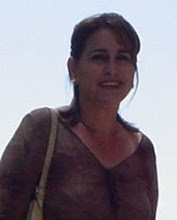Friday, October 31, 2014
Turquino Peak: Natural Paradise
Located in the heart of the Sierra Maestra, Cuba's highest mountain range, the Turquino Peak, rises to 1,974 meters above sea level, on a scenario of 17,540 acres of rivers, forests, valleys and peaks. There are two typical access to scale; one from the territory of the province of Santiago de Cuba and other relatively simple, from the province of Granma. At the top there is a bust of José Martí, the work of sculptor Jilma Madera, which was settled in the centenary year of his birth (1953), by Celia Sanchez and her father. / Taken from www.ahora.cu
Thursday, October 2, 2014
Gold mining, an illegal practice in Holguin
Alberto Ochoa took days digging in the same place. His sense of smell told him that he was getting closer to the precious metal, and he was very close, but of digging his own grave. Luck and rapid assistance of a colleague saved him from death. Now, he complains about the heat that causes the bandage on his body, but is happy to be alive to tell the story.
In Holguin, people like Alberto have digged holes wherever they think they might be able to find gold, in order to fill their pockets with money. But these ignorant persons are not aware of the damage they cause to the environment and their health.
What initially became an intermittent practice in the old gold mine at the community of Aguas Claras, in the head municipality, has been extended to the towns of Moa, "Rafael Freyre" and Báguano.
AFTERMATH OF A FEVER
A tour of some mining areas shows an apocalyptic landscape. The community “Tres Fiebres”, located in the mountainous region of Moa, seems a crater within this natural paradise that is the Alejandro de Humboldt National Park, World Heritage Site since 2001. Several gold seekers have arrived there, posing a threat to environment.
Near the river Calentura, gold-seekers have indiscriminately cut trees to build temporary camps. There, they cook their food and sleep during the week stay. Not all of them are from Holguin, as there are "visitors" from Guantanamo and Santiago de Cuba. Also, although it is cause for concern, there are women and children.
When asked if they were sure that particles obtained were gold, they said that others were engaged in check, showing that behind these makeshift miners there are magnates with knowledge and experience in the field, who take the best part of the business without spending any work.
Throughout the strip of land that runs alongside the river, there are several excavations showing morphological damage to the soil and sediment of the river. On the land, there are pieces of nylon, plastic bottles, cardboard and food waste.
Rolber Reyes, acting head of the Environmental Unit at the Provincial Delegation of CITMA, said the illegal gold mining generates, in environmental terms, quite negative impacts, mainly for the effects on river banks, erosion soils, vegetation clearing and water pollution.
"Gold is always found in very small amounts and its extraction becomes complicated. To separate gold fom other minerals dangerous substances are used, such as mercury and sodium cyanide, whose neglectful use near rivers can cause irreparable damages to the ecosystem and human health. Of course, such chemicals do not reach their hands by magic, but they are "managed" through state agencies.
"In the case of cyanide death is quick, but poisoning with heavy metals such as mercury tends to lead to a long suffering, such is the case of umans who eat fish contaminated with mercury can be poisoned. Currently the CITMA delegation is carrying out a process of control and inventory of substances that can be used in the illegal mining. Thus, we will have a systematic information on their use and existence in each entity, " explained Reyes.
These people's desire of making some money, do not let them to consider the damages they cause to environment. According to Rafael, a young boy engaged in the activity: "In the world there are a lot of people doing worse things to the environment, and what I do is not so serious. Besides, I'm earning money by the sweat of my work, without stealing anytnhing to anyone. "
Environment is heritage and main concern of the nation; as such, resources must be maximized, according to environmental and development policy. People are not allowed to dig, just like that. Legal procedures are needed, protected by laws, decree-laws and legal standards.
The control and fight against this crime have help to reduce illegal gold mining in the territory, but authorities should not lower guard. The work needs to be systematic and tenants of the areas should effectively manage their assets. We can not allow the gold fever to become an epidemic. If we don't take the measures, damage to environment and human life can be irreversible. / Written by Luis Mario Rodríguez Suñol
Subscribe to:
Comments (Atom)











